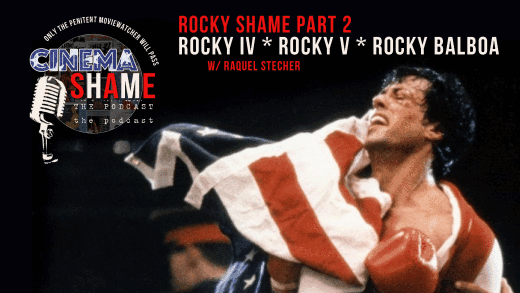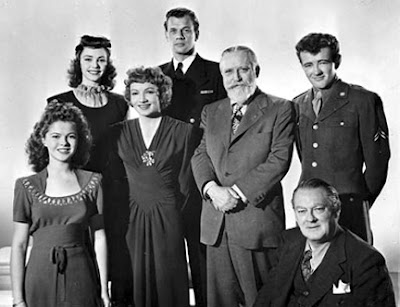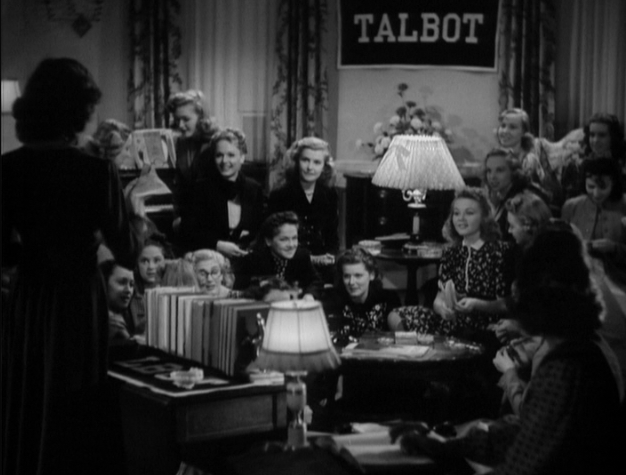"But Mr. Middleton, music is the most important thing to me."
"No Mr. Bone. The most important thing is your life."
Obsession can destroy a person. In the 1940s, venerated actor Laird Cregar was making strides in Hollywood. He had success in films such as Blood and Sand (1941), I Wake Up Screaming (1941), This Gun for Hire (1942) and Heaven Can Wait (1943). However he hit a major career roadblock when he lost the part of Waldo Lydecker in Laura (1944) to Clifton Webb. The problem was that Cregar looked the part of a heavy. Audiences instantly knew he was a villain. Cregar was a big guy, over 300 pounds with bulging eyes. For Hollywood this meant being relegated to obvious villain roles. He'd be denied romantic leads and complicated characters. Cregar's obsession with his craft led him on the road to destruction.
20th Century Fox's Darryl F. Zanuck didn't know what to do with Cregar who had turned down several roles hoping for something that would make him a star like his idol John Barrymore. After much negotiation, Cregar got the lead role in Hangover Square (1945). This role would be his last. Cregar had gone on a crash diet losing a whopping 100 pounds. After the filming he planned on having operations that would transform him from villainous heavy to romantic leading man. He underwent the era's equivalent of gastric bypass surgery in December of 1944 with plastic surgery on his eyes to follow. Having done so much damage to his body in the quest to become the actor he always wanted to be, Cregar's body gave out and he died a few days after his stomach operation.
 |
| Linda Darnell and Laird Cregar |
Cregar's performance as George Harvey Bone would be his grand finale. His character's trajectory would mirror his own. Directed by John Brahm, Hangover Square is a Film Noir set in the Edwardian era. George Harvey Bone is a celebrated composer. He suffers from psychotic spells that set him in murderous rages. When he comes out of these spells he doesn't remember what he's done and he returns to being his mild-mannered self. His friends Sir Henry Chapman (Alan Napier ) and Chapman's daughter Barbara (Faye Marlowe) are concerned about him and ask him to seek the advice of psychiatrist Dr. Allan Middleton (George Sanders). Dr. Middleton suspects the recent murders were committed by George but continues to study him to make sure.
George falls into the snare of lounge singer Netta Longdon (Linda Darnell). She's beautiful, exotic and just out of reach. She entices him in a way that the sweet and doe-eyed Barbara. Netta uses her sexual allure to get George to compose original songs for her. George falls in love and Netta has no clue what psychotic rage lurks beneath George's relative mild exterior. Everything literally goes up in flames in two dramatic climaxes: a Guy Fawkes bonfire followed by the tortured performance of George's masterpiece, his grand concerto.
The story was based on author Patrick Hamilton's 1941 novel. Adapted for the screen by writer Barre Lyndon, significant changes were made to the plot. The setting was shifted from England on the brink of WWII to an Edwardian setting. In the movie, the principal character is a composer and music becomes an overarching theme in the story. Legendary composer Bernard Herrmann contributed a beautiful score as well as a fantastic 10 minute concerto.
Hangover Square is a stunning Film Noir. Cinematographer Joseph LaShelle's artistry is on full display. The artful composition of scenes with forced perspective, careful placing of objects and people and stunning lighting add to the eeriness of the film. There is one shot in particular that I loved. George Sanders' Dr. Middleton is confronting Cregar's George Bone. Sanders is in shadow and Cregar is washed in a harsh light. The recent 4k restoration sharpens the visual artistry of the film.
I'm always delighted to find a new-to-me Film Noir to fall in love with. Hangover Square did not disappoint. I particularly loved the performances and found a new appreciation for Laird Cregar. He artfully plays a Dr. Jekyll/Mr. Hyde type delivering a masterful final performance. Unfortunately we were all robbed of what could have been a long and legendary career from this talented man.
 |
| George Sanders and Faye Marlowe |
I'll watch anything with George Sanders in it and he's what drew me to the film in the first place. I only wish there was more of him in this movie to enjoy! Linda Darnell is playful as the wily femme fatale. I was particularly delighted with Faye Marlowe whose Barbara is the polar opposite of Darnell's Netta. Hangover Square is her film debut. At the tender age of 17, Faye Marlowe was in a high school production of Our Town and caught the eye of a talent agent. Soon after she did a screen test and was signed to a contract with 20th Century Fox. Years later Marlowe joked, "back in those days studios were signing up starlets like bad checks." Darryl F. Zanuck changed her surname to the glamorous Marlowe and John Brahm cast her in the role because she reminded him of his ex-wife. Marlowe is still with us and is the last surviving cast member.
Hangover Square (1945) is available on Blu-Ray from Kino Lorber. Bonus features include audio commentary track with screenwriter/historian Steve Haberman and actress Faye Marlowe and a separate commentary track with author/historian Richard Schickel. There's a short doc on Laird Cregar, a few trailers and an audio recording radio production of the movie featuring Vincent Price in the lead role.

















































